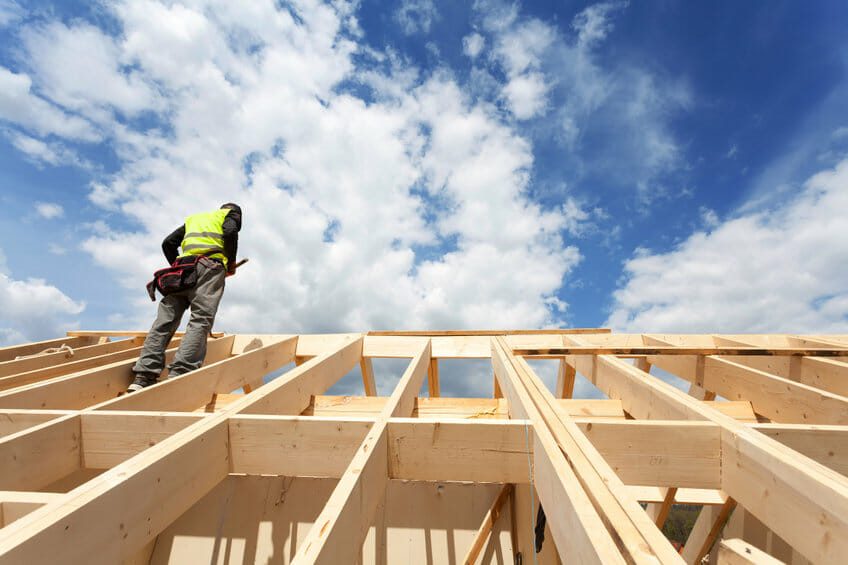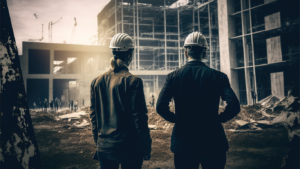In the first live event hosted by Valley Partnership since the onset of COVID-19, four homebuilding experts traced the effects the pandemic has wrought on the Arizona homebuilding and housing market and what the industry needs to focus on to ensure a supply of affordable housing in Greater Phoenix.
A confluence of factors has pushed up home prices in the Valley. Arizona continues to be a destination for people and companies across the country. After the Great Recession, the supply of new homes built did not match the influx of residents to the Grand Canyon State. This lack of supply paired with high demand has made homeownership unaffordable for many buyers.
READ ALSO: How can Arizona keep up with increased construction labor demands?
Developers are trying to address this need even as demand seems to have peaked. According to Jim Belfiore, president of KASA Development, demand is down 31% from May — when it was at its highest — and dropped 16% from last year. Conversely, supply for speculative inventory has plummeted 78% year-over-year, while prices of new homes have increased 29% during the same period.
More new homes are on the way. Belfiore notes that approximately 23,000 new home permits were issued in Greater Phoenix as of July and projects that 35,000 could be issued by the year’s end — a level not seen since 2006.
After mostly shuttering operations at the beginning of the pandemic, homebuilders are now struggling to keep up with the workload.
“We just stopped building homes. We dropped from 240 to 100 from March 2020 to April 2020,” says Jeff Gunderson, senior vice president at Lennar. “But almost as quickly as it came, it was gone. Within two months, we’re back up to just starting as many homes as we were before. And within 30 days, we were trying to figure out how to get trade partners back out onto our communities.”
“We went through a really an entire homebuilding cycle in the span of 60 days,” recalls Greg Abrams,
vice president of PulteGroup. “We were paying the price for that earlier in the year for stuff that we had slowed down or stopped. With land development in particular, you can’t accelerate that timeline.”
Labor and materials
Ron Hilgart, principal at HilgartWilson, identifies a key issue affecting the rate at which houses can be built: a lack of labor. During the Great Recession, Hilgart notes, 40,000 people left the construction workforce altogether. “Not only did people leave, but for about five years we weren’t hiring either. That means people weren’t getting trained. After the recovery, there’s been a big gap in the workforce of people with five to seven years of experience. It’s not going to get better anytime soon either, in part because baby boomers are retiring,” he says.
A major consequence of having insufficient labor is protracted project timelines. Gunnerson notes that a home that used to take five months to complete now takes closer to seven — an observation the other panelists agreed with. This slows down the entire pipeline, which further constricts supply in the face of elevated demand and stretches out the closing process.
“If you go into one of the sales centers right now, you’re looking at a 60 to 90 day closing period,” comments Matt Linaman, division manager at Starlight Homes. “Even though permits are going out, our closings have essentially plateaued. What we’re seeing on the front end is a constraint by labor. We’re feeling the ceiling of what we’re able to deliver, and I think there’s a long-term problem of both supply chain and labor that needs to be solved.”
Another factor affecting home affordability is increased material prices. According to data provided by Hilgart, the costs of building a typical neighborhood street have increased roughly 80% over a five-year period. The average unit cost of 8” PVC pipe for water has risen from $16 in 2016 to $38 in 2021, a 138% jump. “The cost of PVC pipe has not only gone up dramatically, but you’re just lucky to get it,” Hilgart maintains.
“Supply chain is amazingly difficult right now. We have literally hundreds of homes that are sitting there at the finish line waiting for materials. For instance, you can’t get the moldings that are in the windows of garage doors,” says Gunderson. “How do we get these homes across the finish line? It’s something that none of us have faced in our careers, and we’ve been doing this for a very long time.”
Abrams concludes, “Figuring out ways to keep our communities affordable is hugely important. Finding efficiencies in our operations through simplifying our plans and options is going to be critical as we move forward. It’s forcing me to think more about density and how we can use that to drive affordability.”




